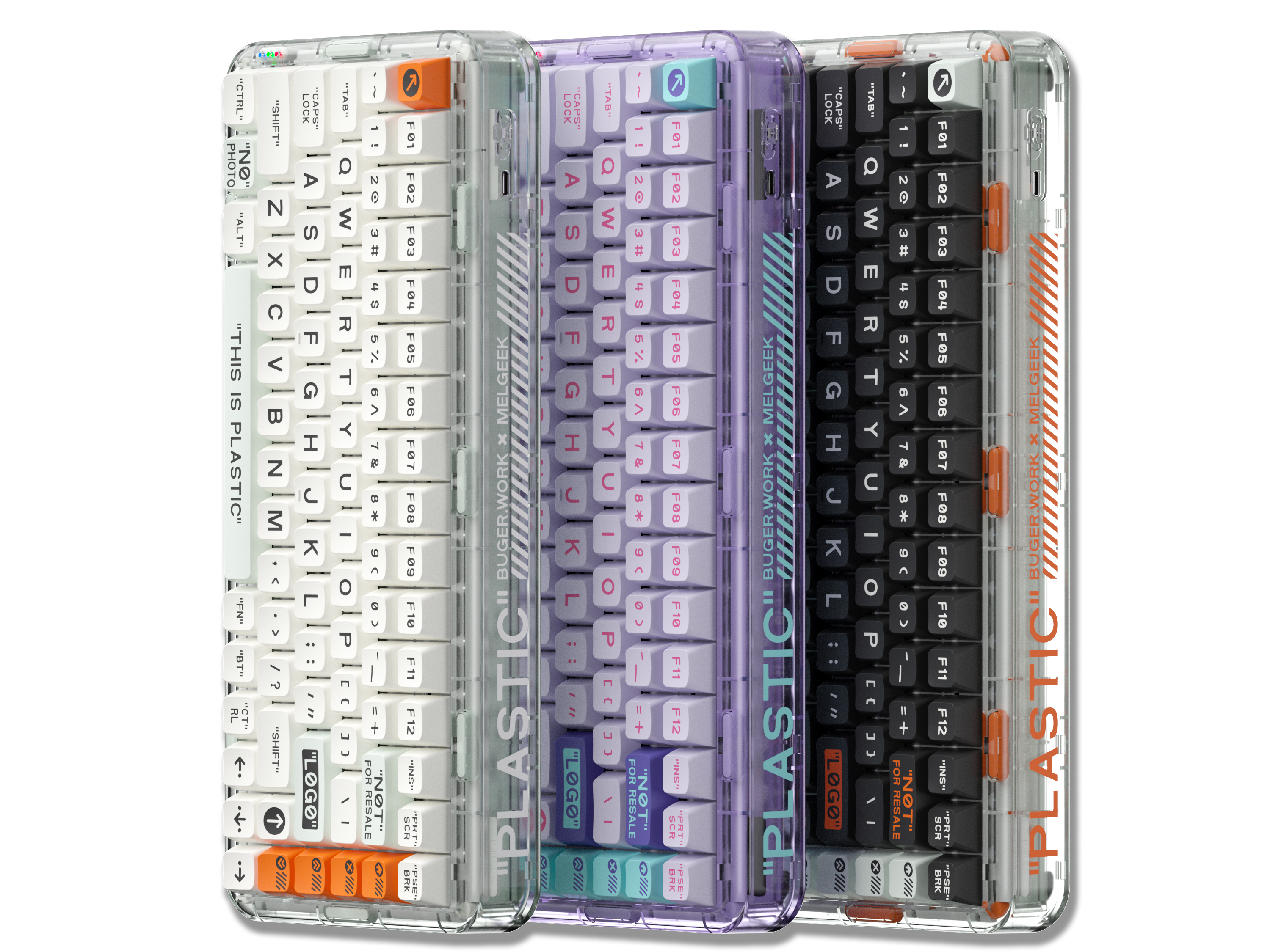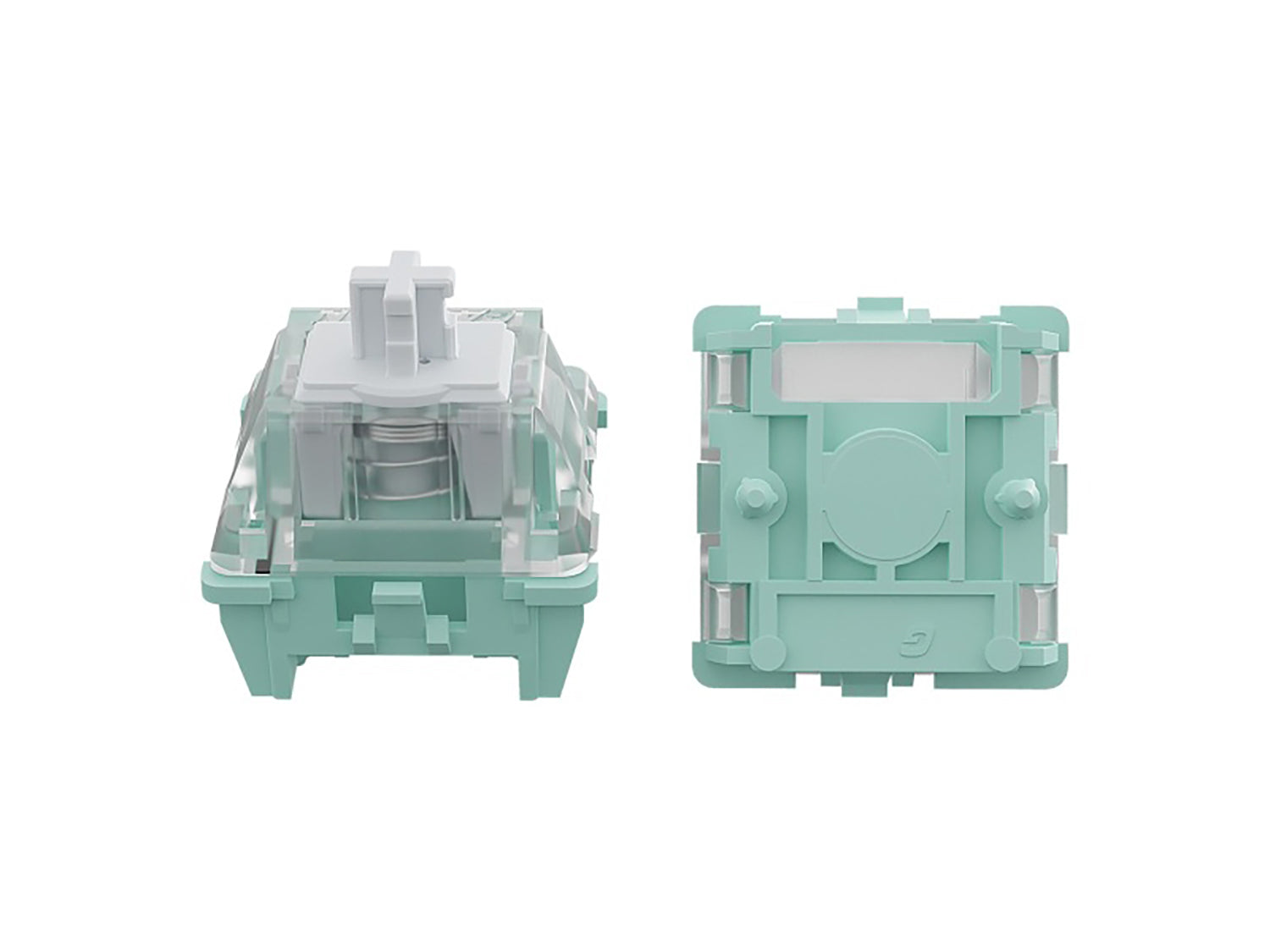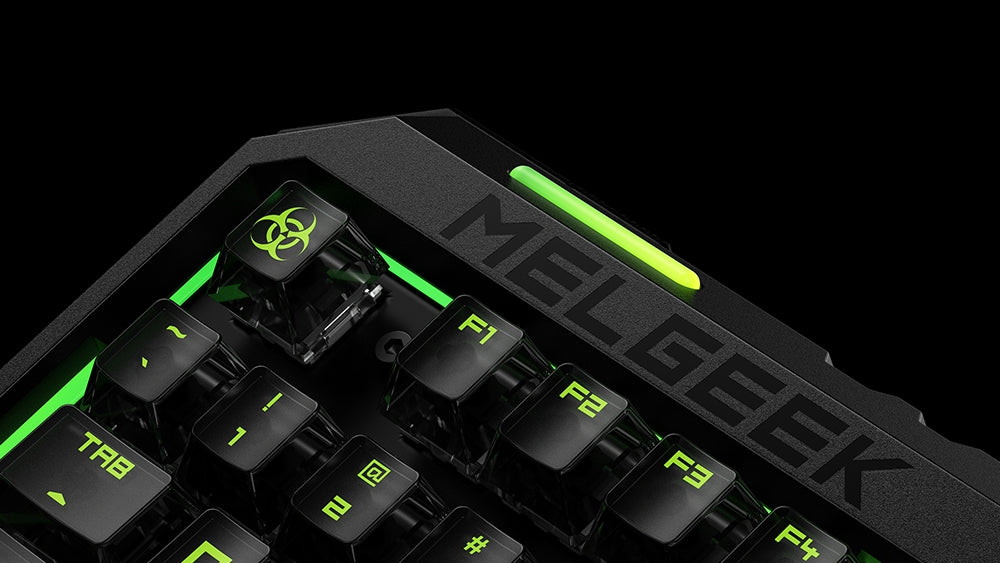Introduction:
In the world of mechanical keyboards, the emergence of magnetic switch technology has revolutionized the way users interact with their devices. Unlike traditional mechanical switches, magnetic switches utilize magnets and Hall sensors to trigger key presses, offering simpler construction and customizable actuation distances. This article explores the concept of magnetic switches, their historical evolution, and the current state of technology, culminating in the innovative MelGeek Cyber01 keyboard.
1. Understanding Magnetic Switches:

The traditional mechanical switch operates by pressing a metal contact to complete a circuit on a PCB, triggering a key press. In contrast, magnetic switches employ magnets on the switch, with a Hall sensor on the PCB detecting the magnetic field change when a key is pressed. This signal is then relayed to the processor, initiating the key action. The key advantage lies in the simplicity of the construction, with the Hall sensor being the critical component for receiving and feedback of information. Magnetic switches offer the added benefit of customizable actuation distances, providing a personalized experience compared to their mechanical counterparts. Additionally, their non-contact nature extends their lifespan, often reaching billions of key presses.
2. Magnetic Spring Switches:

The precursor to magnetic switches, magnetic spring switches, originated in 1932 with the creation of the first microswitch by Phillip Kenneth McGall. McGall's innovation paved the way for the establishment of the American Microswitch Company, which later ventured into keyboard-related businesses around 1960 using magnetic spring switch technology. These switches faced issues such as signal jitter during initial contact, similar to the problems encountered with Cherry MX switches. Furthermore, they grappled with limited lifespan, as keyboard switches of that era were considered excellent if they reached ten million cycles. The demand for reliability in military and aerospace applications pushed these switches to their limits.
3. Birth of the First Magnetic Switch:
In 1965, the American Microswitch Company ushered in a new era of keyboard technology with the introduction of the first magnetic switch. This simple design consisted of a core, magnet, Hall sensor, and spring. The switch's exceptional lifespan, reaching up to one billion cycles according to a 1983 product catalog, surpassed its magnetic spring switch predecessor and most contemporary mechanical switches. The magnetic switch offered an unparalleled input experience, particularly with the linear variant, featuring an almost perfect linear force graph. The implementation of high-performance Hall sensors also introduced anti-ghosting functionality, increasing input efficiency by 30%. Continuous innovations, such as embedding two independent Hall elements in a single switch for dual-trigger capabilities, expanded the possibilities for future keyboard scenarios.
4. Demise of American Microswitch Company:
Despite the initial success of magnetic switch technology, the American Microswitch Company faced challenges leading to its gradual disappearance. The company prioritized enhancing the upper limits of keyboard quality rather than focusing on lower-cost, simpler alternatives. The rise of Cherry MX switches, which did not require power, had a smaller form factor, lower cost, and simpler installation, contributed to their competitiveness in the market. Additionally, changing consumer demands shifted from considering keyboards as symbols of overall computer quality to prioritizing practicality and comfort. The acquisition of the American Microswitch Company by Honeywell in 1950 and subsequent sale of its keyboard-related business to the American Deliberate Creation Company in 1993 indicated a misalignment with Honeywell's strategic direction, potentially limiting the market reach of magnetic switch technology.
5. Modern Magnetic Switches:
Around 1978, Omron introduced a magnetic switch, marking the continued development of magnetic switch technology. However, it wasn't until 2014 that a commercially available magnetic switch keyboard appeared on the market. Despite being a noteworthy attempt, this keyboard faced issues such as squeaky spacebar, rough casing, and subpar switch feel, overshadowing the advantages of magnetic switches. In 2016, the collaboration between XMIT and APT aimed to release a magnetic switch keyboard on the crowdfunding platform Drop. However, due to unresolved issues, the keyboard received a low rating of 1.5/5, highlighting the challenges faced by magnetic switch technology in practical keyboard applications.
6. Wooting and the Future of Magnetic Switches:
The Netherlands-based customization keyboard team, Wooting, founded in 2015, delved into magnetic switch technology, leading to the release of the Wooting One in 2016. In 2018, Wooting collaborated with Taiwan's Mpower to produce a prototype magnetic switch product. However, in 2019, Jia Da Long introduced the Apex Pro magnetic switch keyboard with the Omnipoint switch, further showcasing the potential of magnetic switches. Despite challenges faced by different manufacturers in terms of switch lifespan, user adaptability, and wireless functionality, the continuous innovation in magnetic switch keyboards is evident. In April 2023, a patent by Zhi Di Technology revealed a potential breakthrough in reducing manufacturing complexities for magnetic switch keyboards, hinting at a positive future for the technology.
7. MelGeek Cyber01: The Future of Magnetic Switches:
Revolutionizing Magnetic Switch Technology:
The MelGeek Cyber01 marks a significant leap in the evolution of magnetic switch keyboards. Building on the foundations laid by its predecessors, MelGeek seamlessly blends years of keyboard manufacturing expertise with cutting-edge magnetic switch technology. The result is a keyboard that redefines user experience, catering to the needs of both gamers and daily computer users.
Precision in Every Keystroke:
At the core of the Cyber01's exceptional performance lies its magnetic switches. Engineered for ultra-short trigger distances and minimal latency, these switches deliver a swift and precise input experience. Whether you're deep into an intense gaming session or handling everyday computing tasks, the Cyber01 ensures responsiveness that sets it apart.
Optimized Performance:
MelGeek takes performance a step further by optimizing the Cyber01's Printed Circuit Board (PCB) with advanced key scanning algorithms. This enhancement significantly reduces delays when multiple keys are pressed simultaneously, a crucial factor in scenarios that demand quick and complex inputs. The inclusion of the Rapid Trigger feature further elevates the Cyber01's capabilities, making it a formidable companion in situations requiring high-frequency repeated key presses.
Crafted for Longevity and Style:
True to MelGeek's commitment to craftsmanship, the Cyber01 boasts a durable and stylishly minimalist exterior. The design not only meets user demands for aesthetics but also ensures longevity, reflecting MelGeek's dedication to creating keyboards that stand the test of time. Every detail, from the tactile feel of the keys to the sensitivity of each press, is carefully curated to provide an unparalleled magnetic switch keyboard experience.
In Conclusion:
The MelGeek Cyber01 stands at the forefront of the magnetic switch keyboard revolution, showcasing innovation, precision, and a commitment to user satisfaction. As technology progresses, magnetic switch keyboards, exemplified by the Cyber01, are poised to play a pivotal role in shaping the future of user interaction and computing. With each keystroke, the Cyber01 invites users to embrace the evolving world of input devices, setting a new standard for what a magnetic switch keyboard can achieve.






